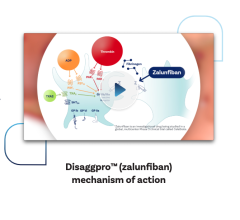November 12, 2014 — The actions — or inaction — of patients should be considered in programs designed to improve care and patient outcomes, according to a report released by the American College of Cardiology, American Heart Association, American Association of Cardiovascular and Pulmonary Rehabilitation, American Academy of Family Physicians and the American Nurses Association in collaboration with other professional organizations.
The work of doctors and other clinicians is often evaluated based on “performance measures,” specific measurable steps that should be taken or avoided in treating patients for specific conditions. For instance, whether aspirin is given within the first 24 hours of a patient arriving at a hospital having a heart attack is an important performance measure.
Incorporating both clinicians and patients into shared-accountability performance measures may be an important way to improve patient-centered outcomes, morbidity and mortality, according to the report, “The Concepts for Clinician–Patient Shared Accountability in Performance Measures,” which was published online.
The report was developed in collaboration with the National Committee for Quality Assurance, the American Society of Health System Pharmacists, and the American Medical Association–convened Physician Consortium for Performance Improvement. It is endorsed by the American Society of Health-System Pharmacists
While performance measures have traditionally been clinician-focused, their goal of improving patient outcomes is heavily dependent on the healthcare system as well as patient actions. Recognizing this, the developing organizations sought to outline the key concepts, measurements and considerations for implementing patient-clinician shared-accountability performance measures.
Shared-accountability performance measures track patient actions that affect outcomes—such as following treatment plans, taking medications as prescribed, going to follow up appointments, and maintaining lifestyle changes—along with physician processes. The use of shared-accountability performance measures, which recognizes the “inextricably linked” nature of patient and clinician action, has been advocated by the Institute of Medicine.
In order to implement shared-accountability performance measures, patients must have “sufficient support and knowledge to actively participate in their health care,” the report says. Shared goal setting, shared decision making, and shared care planning and monitoring between patient and clinician are all important concepts to implement as part of shared-accountability performance measures, the report said.
Further, measures should be shifted from assessing acute care processes to longitudinal outcomes, according to the report. For example, medication adherence should be tracked instead of only drug prescription and whether treatments achieved their goal should also be evaluated.
“Current performance measures often just focus on whether a medication is prescribed or not, but these medications are often used to treat chronic conditions, like hypertension, and need to be taken lifelong or for extended periods of time,” said P. Michael Ho, M.D., Ph.D., staff cardiologist at the Veterans Affairs Eastern Colorado Health Care System and writing committee co-chair. “Achieving this longitudinal adherence is a shared responsibility, as the clinician must discuss treatment preferences and provide proper education, while the patient must follow the regimen and communicate any adverse effects. By properly acknowledging and motivating these interrelated factors, shared-accountability performance measures can help improve longitudinal treatment adherence, which a growing body of evidence has shown is quite poor.”
The report further discusses methodological challenges involved with shared-accountability performance measures. These include how to measure patient adherence, where to incorporate patients who refuse treatments, and how to specify episodes of care for longitudinal measures.
The document also examines the need to risk adjust for patient case mix, considering such factors as cultural beliefs, religion, socioeconomic status and clinical characteristics. Moreover, the writing committee addresses the health information infrastructure necessary for tracking patients across multiple healthcare settings and highlights current payment reform policies that support the adoption of concepts behind shared-accountability performance measures.
Noting that performance should be reported back to both clinicians and patients to facilitate improvement, the report additionally cautions that careful monitoring should be conducted to ensure implementation does not result in a negative clinician-patient relationship, adverse patient selection by clinicians or greater barriers to care. Instead, focus should be placed on uniting the various stakeholders in a collaborative effort to enhance care quality.
“The goal of performance measurement is to improve patient outcomes, including improving the patient’s health status, and reducing their morbidity and mortality. Therefore, it is important to engage everyone that can have an impact on these goals including patients, family members or caregivers, clinicians and the healthcare system,” said Eric D. Peterson, M.D., MPH, director at the Duke Clinical Research Institute and writing committee co-chair. “Shared-accountability performance measures explicitly acknowledge these interdependencies so that everyone can work together towards the improved health of the patient.”
The paper was published on the websites for the ACC and AHA and will appear in an upcoming print edition of the Journal of the American College of Cardiology. The work of the writing committee was supported exclusively by the ACC and AHA, without commercial support.
For more information: www.cardiosource.org, www.heart.org


 November 19, 2025
November 19, 2025 









